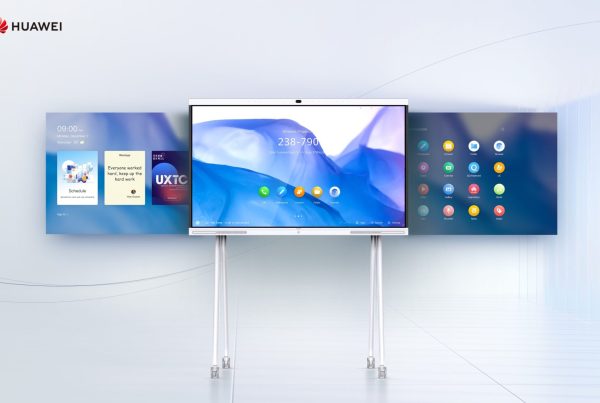Introduction
In today’s fast-paced digital world, video conferencing software has emerged as a vital tool for businesses, educational institutions, healthcare providers, and individuals. This technology enables real-time communication and virtual collaboration among participants, regardless of their geographical location. From hosting virtual meetings to conducting online classes and connecting with loved ones, video conferencing software has revolutionized the way we communicate.
Table of Contents
- Introduction
- Top 5 Video Conferencing Software Platforms
- Importance Of Video Conferencing Software & Solutions
- Classifying Video Conferencing Software: Key Factors to Consider
- Symptoms and Signs of Video Conferencing Improper Software Usage
- Limitations and Risk Factors Associated with Video Conferencing Software
- Diagnosis and Tests for Video Conferencing Software Effectiveness
- Treatment Options for Optimizing Video Conferencing Experience
- Preventive Measures for Successful Video Conferencing
- Personal Stories and Case Studies
- Expert Insights on Video Conferencing Technology
- Conclusion: Navigating the World of Video Conferencing
- FAQs
Top 5 Video Conferencing Software Platforms
- Zoom: Zoom has skyrocketed in popularity, thanks to its intuitive interface and extensive features. From HD video and audio quality to virtual backgrounds and screen sharing capabilities, Zoom offers a comprehensive solution for remote communication and virtual collaboration.
- Microsoft Teams: Microsoft Teams is not just a video conferencing tool but a complete virtual collaboration platform. With seamless integration with the Microsoft Office 365 suite and channel-based organizations, Teams is ideal for businesses looking for a unified solution for communication and productivity.
- Google Meet: Google Meet, formerly known as Hangouts Meet, is Google’s offering in the video conferencing space. With features like integration with Google Calendar, real-time captioning, and secure infrastructure backed by Google Cloud, Meet is a reliable choice for virtual meetings and webinars.
- Cisco Webex: Cisco Webex is trusted by businesses worldwide for its secure online meetings and webinars. With end-to-end encryption, AI-powered noise cancellation, and personalized meeting rooms, Webex ensures a seamless and productive collaboration experience for teams of all sizes.
- Skype: Although not as popular as it once was, remains a viable option for video conferencing and instant messaging. With features like video calling, screen sharing, and messaging, Skype continues to be used by individuals and small businesses for remote communication.
Importance Of Video Conferencing Software & Solutions
The significance of video conferencing software has soared, particularly in the wake of global events like the COVID-19 pandemic. With remote work, virtual collaboration and communication becoming the new norm, businesses rely on these tools to maintain productivity and foster collaboration among distributed teams. Additionally, video conferencing software plays a crucial role in reducing travel expenses, minimizing carbon footprints, and facilitating inclusive communication across borders.
Classifying Video Conferencing Software: Key Factors to Consider
Video conferencing software can be categorized based on various factors such as deployment model, features, target audience, and pricing structure. Understanding these classifications can help users choose the right solution to meet their specific needs.
- Deployment Model: Cloud-based vs. on-premises solutions.
- Features: Screen sharing, recording, chat functionality, virtual backgrounds, etc.
- Target Audience: Individual users, small businesses, large enterprises, educational institutions.
- Pricing Structure: Free, subscription-based, or one-time purchase options.
Understanding these classifications helps users select the most suitable video conferencing software for their specific needs.
Symptoms and Signs of Video Conferencing Improper Software Usage
While video conferencing software offers numerous benefits, excessive or improper use can lead to various challenges and drawbacks. Recognizing these symptoms can help users optimize their usage and mitigate potential issues. Some signs are:
- Security Incidents: Unauthorized access or data breaches.
- Inefficient Meetings: Difficulty in conducting smooth and productive meetings.
- Compatibility Issues: Problems integrating with other software or devices.
- High Costs: Unexpected expenses due to inefficient usage or overuse of paid features.
Limitations and Risk Factors Associated with Video Conferencing Software
Several factors contribute to the challenges and limitations of video conferencing software, ranging from technological constraints to human factors. Understanding these causes can help users address potential risks and optimize their virtual communication strategies. Common limitations are:
- Technical Problems: Poor internet connection can lead to lag, dropped calls, and poor audio/video quality.
- Security Concerns: Risk of unauthorized access and data breaches.
- Limited Non-Verbal Communication: Difficult to read body language and facial expressions accurately.
- User Training: Requires training for effective use.
- Cost: High-quality solutions can be expensive, especially for small businesses.
Understanding these limitations helps in making informed decisions about video conferencing software and tools.
Diagnosis and Tests for Video Conferencing Software Effectiveness
Evaluating the effectiveness and performance of video conferencing software requires a systematic approach, encompassing both technical assessments and user feedback mechanisms. Here are some evaluation methods:
- User Feedback Surveys: Gather feedback on user satisfaction and identify common issues.
- Performance Metrics: Monitor metrics such as call quality, connection stability, and usage statistics.
- Security Audits: Conduct regular security assessments to identify vulnerabilities.
- Compatibility Tests: Check integration with various devices and other software.
- Network Analysis: Evaluate network performance and bandwidth usage during calls.
- Stress Testing: Simulate high-usage scenarios to test software performance under load.
These methods help diagnose issues and ensure the software meets user needs effectively.
Treatment Options for Optimizing Video Conferencing Experience
Improving the overall video conferencing experience requires a combination of technological enhancements, organizational strategies, and user education initiatives. Such as:
- Upgrade Internet Connection: Ensure a stable and high-speed internet connection.
- Use Quality Equipment: Invest in good webcams, microphones, and headsets.
- Software Updates: Keep the video conferencing software updated to the latest version.
- Proper Training: Train users on effective use and best practices.
- Security Measures: Implement strong security protocols to protect against breaches.
- Optimize Settings: Adjust software settings for optimal performance.
- Regular Maintenance: Perform regular system checks and maintenance.
Implementing these measures can significantly improve the video conferencing experience.
Preventive Measures for Successful Video Conferencing
Proactive measures can help organizations and individuals mitigate potential challenges and maximize the benefits of video conferencing technology. Here are a few:
- Ensure Reliable Internet: Use a high-speed, stable connection to avoid disruptions.
- Invest in Quality Equipment: Use high-quality cameras, microphones, and speakers for clear audio and video.
- Regular Software Updates: Keep the video conferencing software updated to access new features and security patches.
- Conduct Pre-Meeting Checks: Test audio, video, and screen sharing before the meeting starts.
- Implement Security Protocols: Use encryption and strong passwords to secure meetings.
- Educate Users: Provide training on effective use and best practices for the software.
- Optimize Environment: Choose a quiet, well-lit space for video calls.
Following these measures ensures a smooth and effective video conferencing experience.
Personal Stories and Case Studies
Real-life anecdotes and case studies can provide valuable insights into the practical applications and impact of video conferencing software.
Expert Insights on Video Conferencing Technology
Industry experts and professionals offer valuable perspectives on the evolution, trends, and future prospects of video conferencing software. Explore in-depth solutions from Proxynet Communications and explore a variety of VC Accessories and Solutions here.
Conclusion
In conclusion, video conferencing software has emerged as a vital tool for modern communication, enabling seamless virtual collaboration and connectivity in an increasingly digital landscape. By understanding the types, symptoms, causes, and preventive measures associated with video conferencing technology, users can optimize their virtual communication experiences and harness the full potential of this transformative technology.
FAQs
Five popular video conferencing software options include Zoom, Microsoft Teams, Google Meet, Cisco Webex, and Skype.
Zoom is widely regarded as one of the most popular web conferencing software due to its user-friendly interface, robust features, and widespread adoption across various industries.
The exact number of people using video conferencing software varies, but with the rise of remote work and virtual communication, millions of individuals and organizations worldwide rely on these tools for daily collaboration and communication.
The oldest video conferencing software is difficult to pinpoint, but some early examples include CU-SeeMe, introduced in the 1990s, and NetMeeting, released by Microsoft in 1996.
Zoom is often considered the most popular video conferencing software due to its intuitive interface, comprehensive features, and widespread adoption among businesses, educational institutions, and individuals.






